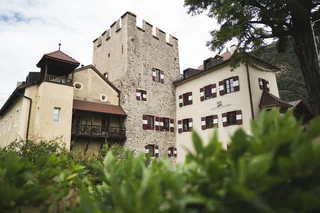
"Cazanhof"
Ora/Auer, Auer/Ora, Alto Adige Wine Road

Ora/Auer, Auer/Ora, Alto Adige Wine Road

1/2
Laces/Latsch, Latsch/Laces, Vinschgau/Val Venosta

1/4
Predonico/Perdonig, Eppan an der Weinstaße/Appiano sulla Strada del Vino, Alto Adige Wine Road

Senale/U.L. Frau i.W., U.L.Frau i.W.-St. Felix/Senale-S.Felice, Meran/Merano and environs

1/3
Piccolino/Pikolein, San Martin /San Martino, Dolomites Region Kronplatz/Plan de Corones

Cengles/Tschengls, Laas/Lasa, Vinschgau/Val Venosta

1/2
Predonico/Perdonig, Eppan an der Weinstaße/Appiano sulla Strada del Vino, Alto Adige Wine Road

1/13
Casteldarne/Ehrenburg, Kiens/Chienes, Dolomites Region Kronplatz/Plan de Corones

1/3
Dobbiaco Nuova/Neutoblach, Toblach/Dobbiaco, Dolomites Region 3 Zinnen

Pigano/Pigeno, Eppan an der Weinstaße/Appiano sulla Strada del Vino, Alto Adige Wine Road

Settequerce/Siebeneich, Terlan/Terlano, Alto Adige Wine Road

S. Paolo/St. Pauls - Appiano/Eppan, Eppan an der Weinstaße/Appiano sulla Strada del Vino, Alto Adige Wine Road

Plars di Mezzo/Mitterplars, Algund/Lagundo, Meran/Merano and environs

1/2
Gomagoi/Gomagoi, Stilfs/Stelvio, Vinschgau/Val Venosta

1/5
Parcines/Partschins, Partschins/Parcines, Meran/Merano and environs

Ora/Auer, Auer/Ora, Alto Adige Wine Road

1/2
Glorenza/Glurns, Glurns/Glorenza, Vinschgau/Val Venosta

1/3
Merano/Meran, Meran/Merano, Meran/Merano and environs

Ora/Auer, Auer/Ora, Alto Adige Wine Road

Mazzon/Mazon, Neumarkt/Egna, Alto Adige Wine Road

Resia/Reschen, Graun im Vinschgau/Curon Venosta, Vinschgau/Val Venosta

Aquaviva/Ackpfeif, Lana, Meran/Merano and environs

1/11
Glorenza/Glurns, Glurns/Glorenza, Vinschgau/Val Venosta

1/4
Vernago/Vernagt, Schnals/Senales, Vinschgau/Val Venosta

1/5
Malles/Mals, Mals/Malles, Vinschgau/Val Venosta

Selva/Sëlva/Wolkenstein/Sëlva, Sëlva/Selva di Val Gardena, Dolomites Region Val Gardena

Tiso/Teis, Villnöss/Funes, Dolomites Region Villnösstal

1/2
Mazzes/Matzes, Sterzing/Vipiteno, Sterzing/Vipiteno and environs

1/10
Sesto/Sexten

1/3
Morter/Morter, Latsch/Laces, Vinschgau/Val Venosta